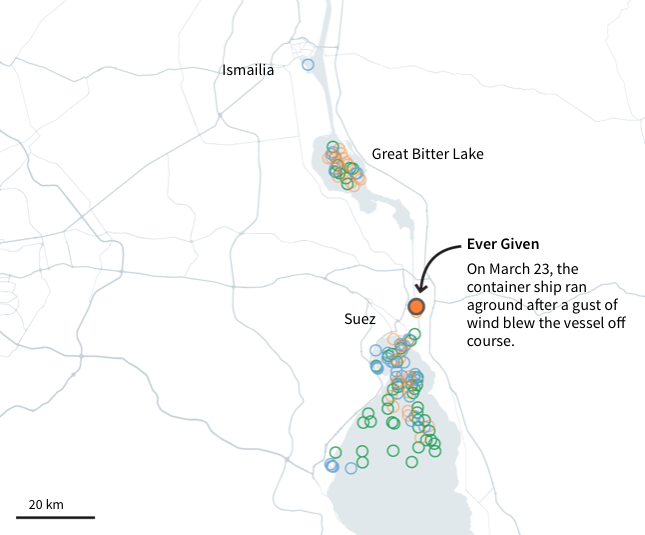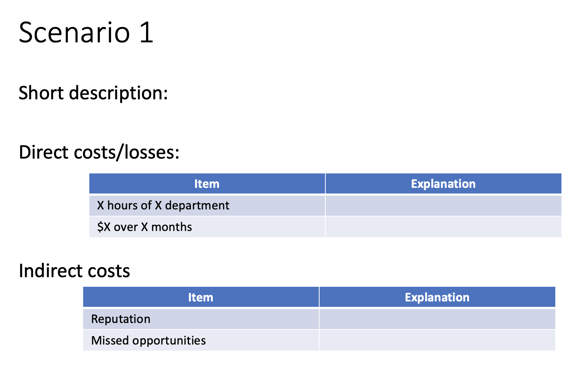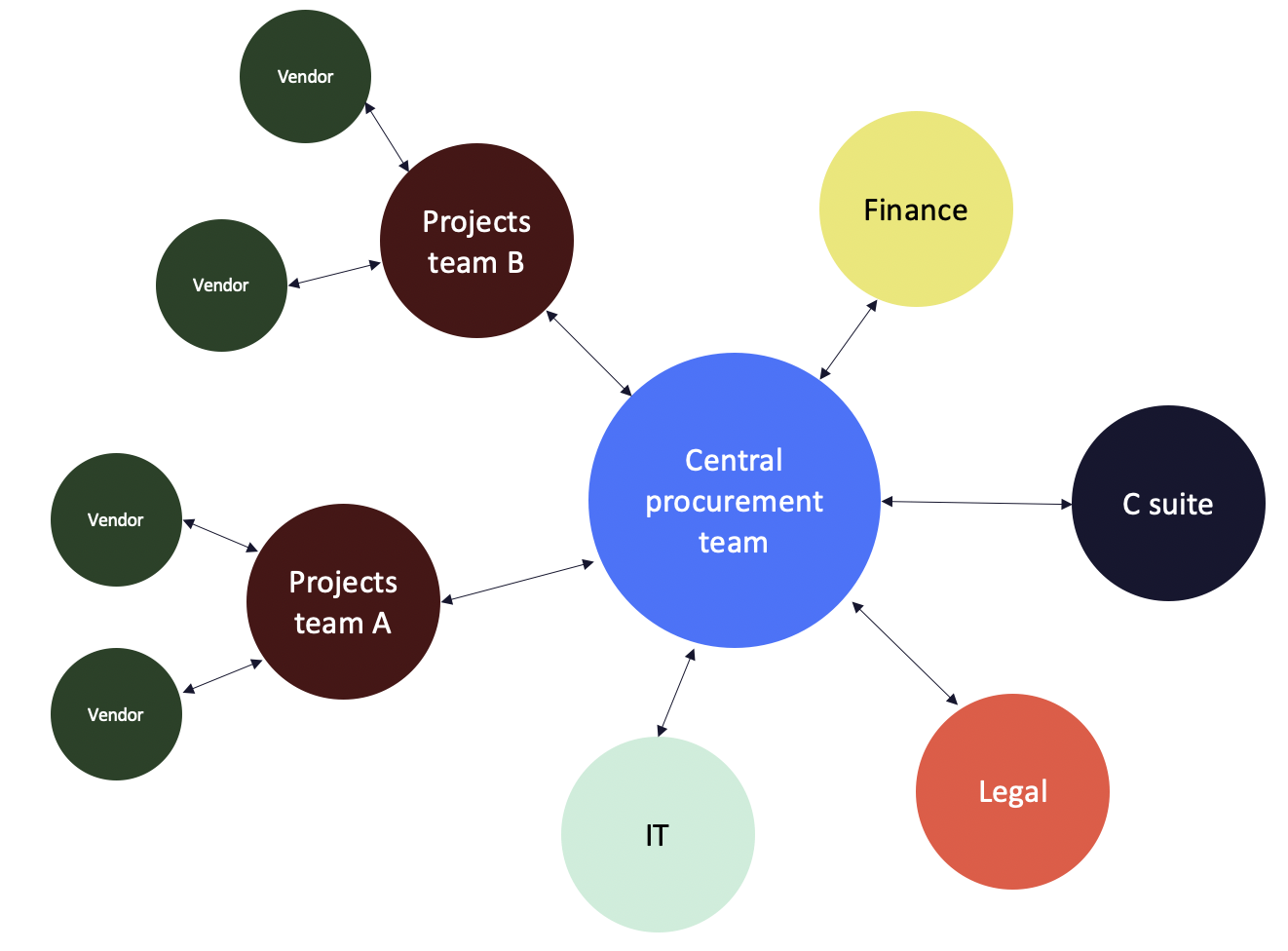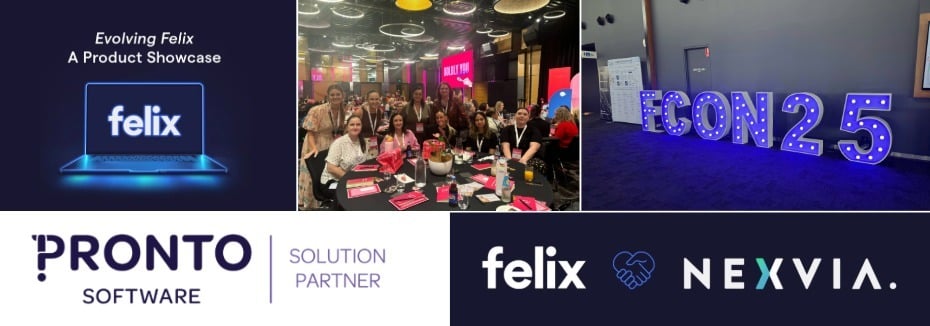In an extraordinary event that captured the world’s attention, the massive 400-metre-long container ship Ever Given got stuck. The countless stories and Internet memes over the ensuing 6 days have reignited debates around supply chain disruption, economics, globalisation and so on.
But here, I’m actually getting inspiration on how to build a business case for procurement software. Let me explain further below.
A disruption event or an incident like this would have ramifications across the whole supply chain, much as how an incident could derail a construction project, for instance.
Calculating the cost of risk
30% of the world's container traffic flows through the Suez Canal. Now let’s run through what the 6-day blockage has resulted in.
Direct cost of the blockage:
- Goods worth over $89m on board
- Up to $40bn of trade disruption, exacerbating logistical challenges due to COVID-19
- Daily lost revenue for Egypt $12-14m
Domino effect:
- The backlog can take weeks and months to clear
- Delays of other vessels who couldn’t get through: over 400 ships
- Port operation schedules thrown into chaos
Legal battles:
- Arrested ship, 2 weeks after being dislodged and is still there with all the cargo on board
- Compensation claim from Suez Canal Authority to the tune of $1bn+
 Source: Reuters
Source: Reuters
So, take a look at your top suppliers in terms of spend value. (Or even more basic than that, do you know exactly where your biggest 3rd party expense is?) And what if something happens to those suppliers?
To build a compelling business case for digital procurement (or for anything really), take the creative license to build the what-if scenario when things go wrong.
The Ever Given saga provided some narrative lines that you can borrow, i.e. think of the direct costs if an incident happens and couldn’t have been prevented due to having no tech solution in place – then cascading into further consequences, financial, legal and operational for all related parties.
Calculating the cost of missed opportunities
While the cost of disruption around the Ever Given is quite obvious, it’s not so much the case for procurement inefficiencies.
This is where calculating opportunity cost comes in handy, which is closely related to the above.
Some questions to get started include:
- What your team could be doing if they weren’t stuck in administrative burden? This goes both ways, for your internal team and your vendors.
- How much could you save from not having to fix/chase up non-conforming items from underperforming vendors?
- How much time could you save from not having to cross check with multiple databases to find and engage a supplier?
Tip: Be specific by using concrete numbers to prove your points, e.g. 6 hours of reduced staff effort per vendor.

An example template
Outlining high-level business impact
The Suez Canal story again highlights a significant risk exposure: high dependence on mega ships to facilitate global trade. That means a “black swan” event like this can leave businesses exposed to interruption.
A similar scenario applies to industries such as construction, infrastructure, resources and utilities provision, where there’s a high dependence on subcontractors to deliver work.
Tying the two to making your business case for a tech solution, demonstrate that this is part of ensuring resilience and agility in the “new normal”.
For organisations affected by the Suez Canal blockage, that means having business contingency plans such as alternative shipping routes, onshoring, exploring new sourcing options.
“Digitised supply chains and technology help organisations adapt to disruptions faster and better, reducing the cost impact and downstream impact on customers.”
For your organisation, similarly, adopting a multi-sourcing strategy where other criteria other than cost can carry more weight. Having a well maintained, up-to-date database of qualified vendors can provide you the agility to react when needed.
It’s crucial to highlight these high-level impact statements when making your business case.
Diffused responsibility = no one will own the results
For a short while, people were confused as to whether the ship is called Ever Given or Evergreen – which is clearly displayed across the vessel. This confusion turns out to be about more than just names.
.jpg?width=800&height=533&name=IMO_9811000_EVER_GIVEN_(09).jpg)
Source: Wikimedia Commons
There are complications when it comes to determining who’s responsible for what:
- Evergreen is the name of a Taiwanese shipping company that leases the ship
- Ever Given is one of the vessels owned by two Japanese firms
- The ship’s technical manager is a German entity who hired the 25 Indian crew members on board
- The ship is insured by a UK company
So what’s the moral of the story here? Two things:
- You can delegate some responsibilities to your contractors and subcontractors, but ultimately, you will be held accountable for certain duties under the law.
- Beware of diffusion of responsibilities (which we’ll delve into below).
Especially if your organisation runs a decentralised procurement operating model, there are inherent governance challenges with that, as we’ve previously discussed in another post.
When building your business case for digital procurement, think of the aspiration for how procurement would operate within the wider enterprise, i.e. who is responsible for what.
Then, layer on top how procurement software can enable that.
In this example, procurement is adopting a hybrid operating model, also known as "project-led, centrally enabled."

Hence, the central procurement team is responsible for the category strategy, policies and processes. Software would allow them to enforce compliance while empowering site-led buying.
The same can be done for other stakeholders.
Closing remarks
While the Ever Given being stuck in the Suez Canel sounds like a world away, it actually has more relevance to the procurement and supply chain world than you think.
I’ve taken the liberty to draw lessons from it in building a business case for procurement software, as it’s a topic that many of those I speak to are interested in.
-----
We’ve also recently published this Procurement Software Buyer’s Guide – 2021 Edition. Be sure to check it out.

Recent Articles
2025 in review: Milestones, insights and achievements
2025 – a year of that brought meaningful developments for Felix as we continue to address the evolving needs of organisations navigating complex supply-chain environments.
Top 10 reasons for a centralised vendor database
As organisations grow, so does the complexity of managing vendor relationships. Many still rely on spreadsheets or siloed systems, which can lead to inefficiencies, data inconsistencies, and compliance risks. A centralised vendor database offers a smarter, more scalable solution that brings structure, visibility, and control to procurement operations.
Here are the top 10 reasons why centralising your vendor data is a strategic move.
Five ways poor contract storage could be costing your organisation money
Contracts are the backbone of every business relationship – legally binding documents that define expectations, responsibilities, and value.
But what if the way your organisation stores those contracts is quietly costing you money?
Let's stay in touch
Get the monthly dose of supply chain, procurement and technology insights with the Felix newsletter.
.jpg)






